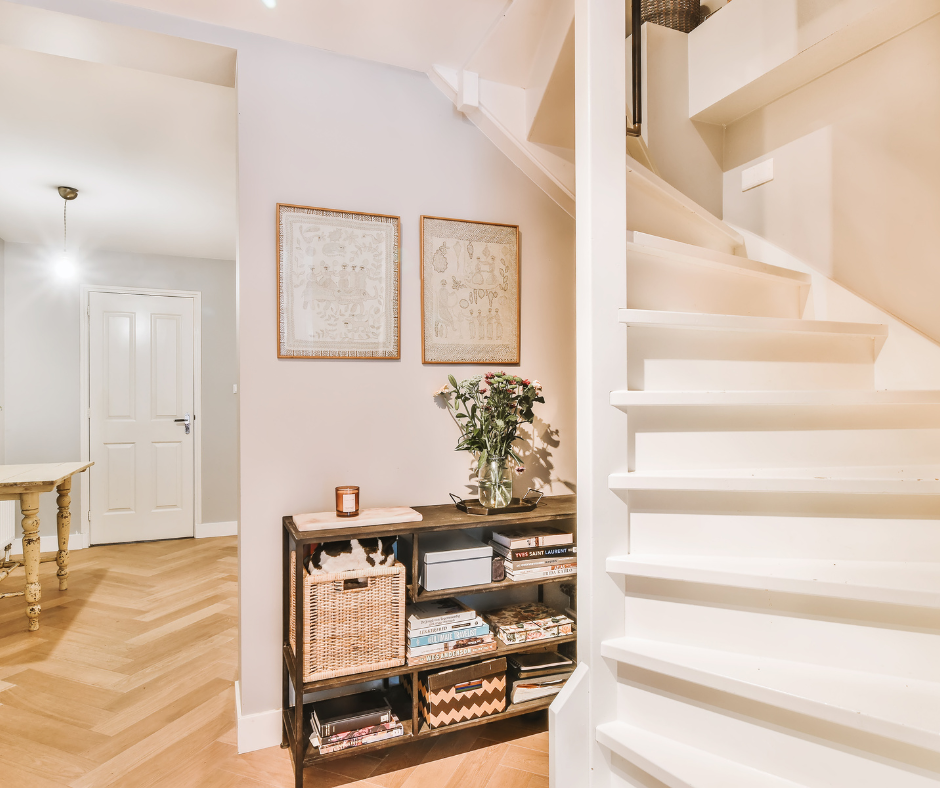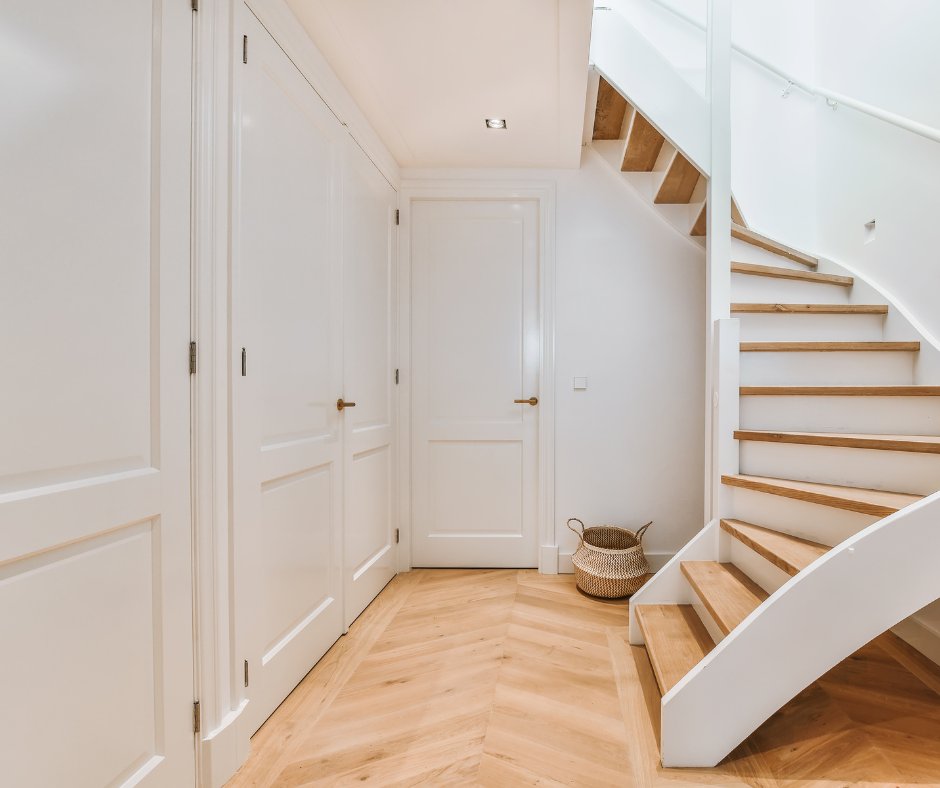Ever wondered why some stairs feel just right while others make you stumble? How much should stair treads overhang when carpeted? The overhang should be between ¾ and 1¼ inches for safe and stylish carpet stair treads. This ensures a secure, comfortable step and a clean, professional finish.
By continuing this guide, you’ll learn how to measure for the right overhang and why it matters for carpet stair treads. You’ll also discover tips for bullnose designs and options for laminate flooring on stairs with overhang. Let’s step into the details that make your staircase safe, beautiful, and built to last.
What Is a Stair Tread Overhang?
A stair tread overhang (also called the nosing) is the portion of the tread that sticks out past the vertical riser. It’s that small curve or extension that helps your foot land naturally and safely on each step.
For most homes, this overhang measures between ¾ and 1¼ inches. It’s an essential feature for creating a smooth, inviting staircase, especially when adding carpet or bullnose overhang finishes.
Why Overhang Matters for Carpet
At Oak Valley Designs, we care about more than just looks – we care about comfort, safety, and family. A proper stair tread overhang gives you:
-
Safer footing for kids, pets, and older adults.
-
A softer, more inviting staircase design.
-
An easier carpet installation process with a professional look.
Without an overhang, stairs can feel sharp, blocky, and even dangerous. The overhang lets the foot roll naturally, making the staircase a safer, more comfortable space for everyone.
Recommended Overhang Measurements for Carpeted Stairs
The sweet spot? ¾ to 1¼ inches. This range provides enough space for the carpet to fit snugly and creates a finished look.
-
Too much overhang? It can create a tripping hazard.
-
Too little? The steps may look unfinished and feel uncomfortable.
If you’re adding carpet, remember: carpet thickness affects the visible overhang. Plush or textured carpet will fill part of the overhang, making it appear smaller, while low-pile carpet will leave it more exposed.
The Magic of Bullnose Overhang
A bullnose overhang refers to a stair tread with a rounded front edge. This design isn’t just stylish – it makes a huge difference for:
-
Easier carpet installation – Carpet wraps smoothly around the curve.
-
Improved safety – Reduces the risk of trips or stubbed toes.
-
Longer-lasting finish – Prevents wear and tear at sharp corners.
-
Better design flow – Especially for open staircases or feature steps.
If you’re working with carpet, a bullnose overhang adds both style and practicality.
Preparing for Carpet Installation on Stairs
Before you install, take these steps:
-
Measure each tread and riser – stairs aren’t always uniform.
-
Check the condition of each step – repair any damage.
-
Decide on bullnose or square edges – bullnose offers smoother transitions.
-
Choose your carpet style – thicker piles fill in more overhang.
This prep ensures your carpet fits beautifully and holds up over time.
How to Install Carpet Over Bullnose Overhang
Installing carpet over a bullnose overhang requires a few extra steps for a perfect finish:
-
Measure the entire tread, including the rounded front edge.
-
Choose a flexible carpet that molds to curves (plush or Berber works well).
-
Use padding that wraps around the bullnose for added cushion.
-
Staple from the underside first to keep the top layer clean.
-
Stretch the carpet tightly and fasten under the nosing.
This approach ensures the carpet hugs the stairs and looks professionally done.
What About Laminate Flooring on Stairs with Overhang?
You’re not limited to carpet. Laminate flooring on stairs with overhang is a popular, durable choice – especially for high-traffic areas.
You have two options:
-
Keep the overhang and use a bullnose laminate trim for a smooth, finished look.
-
Trim the overhang flush and create a squared-off stair profile.
Most DIYers choose the bullnose option for its added safety and sleek appearance.
How to Install Laminate Flooring on Stairs with Overhang
Here’s a simple step-by-step guide:
-
Clean the stairs – remove old coverings, glue, and debris.
-
Measure tread depth, including the overhang, and cut laminate pieces.
-
Add underlayment if needed to match floor thickness.
-
Apply construction adhesive to attach laminate securely.
-
Nail or screw in place and cover fasteners with bullnose trim.
-
Finish with riser and bullnose trim to create a smooth, durable edge.
The result is a staircase that’s safe, stylish, and built to last.
Should You Choose Carpet or Laminate?
It depends on your family’s needs:
-
Carpet: Soft, cozy, perfect for kids, pets, or anyone needing extra safety.
-
Laminate: Sleek, modern, easy to clean – ideal for busy households.
No matter your choice, adding a bullnose overhang improves safety and finish.
Steps to Success
Creating a staircase you feel proud of starts with one detail: the stair tread overhang. Whether you’re installing carpet or laminate flooring on stairs with overhang, the right overhang makes your stairs safer, more stylish, and easier to maintain.
Pair it with a bullnose overhang for a smooth, elegant finish – and you’ve got a staircase that feels like it belongs in a designer home.
Ready to Step Up Your Stairs?
Whether you’re installing plush carpet or sleek laminate, the right overhang ensures safety, style, and a finished look you’ll love. Oak Valley Designs offers stair tread solutions made for DIYers who care about comfort and quality.Explore our cus
-
Website: https://oakvalleydesigns.com/
-
Phone: 706.331.0315
-
Email: info@oakvalleydesigns.com
-
Address: 30 River Ct SW Bldg E Cartersville, Ga 30120




